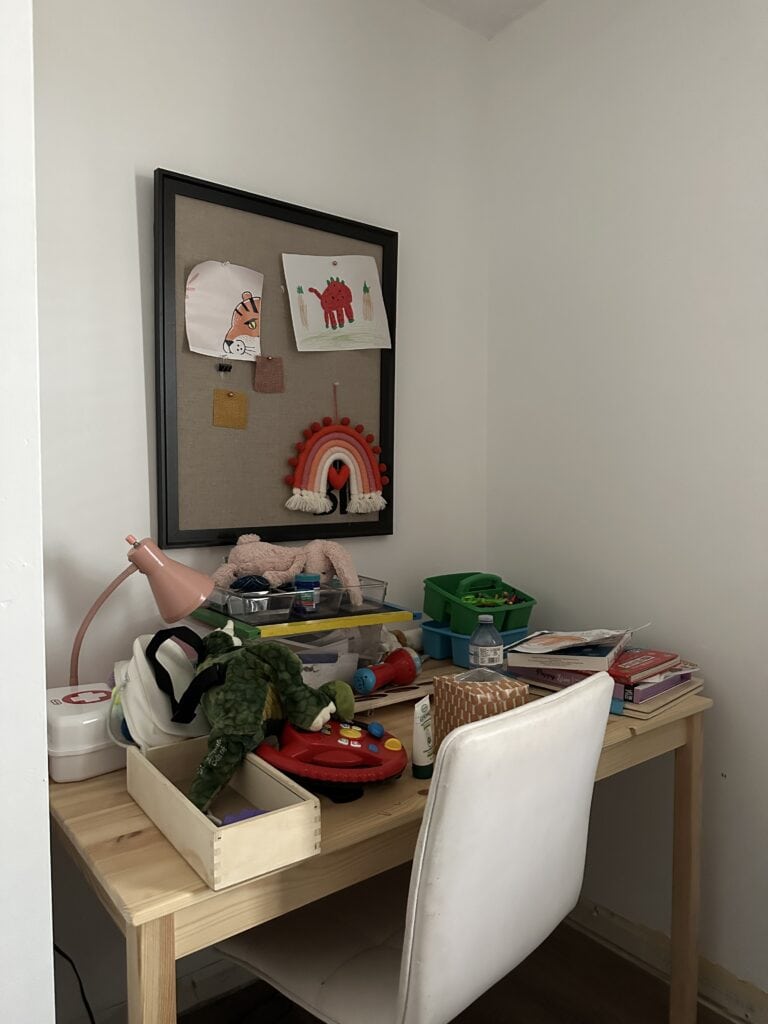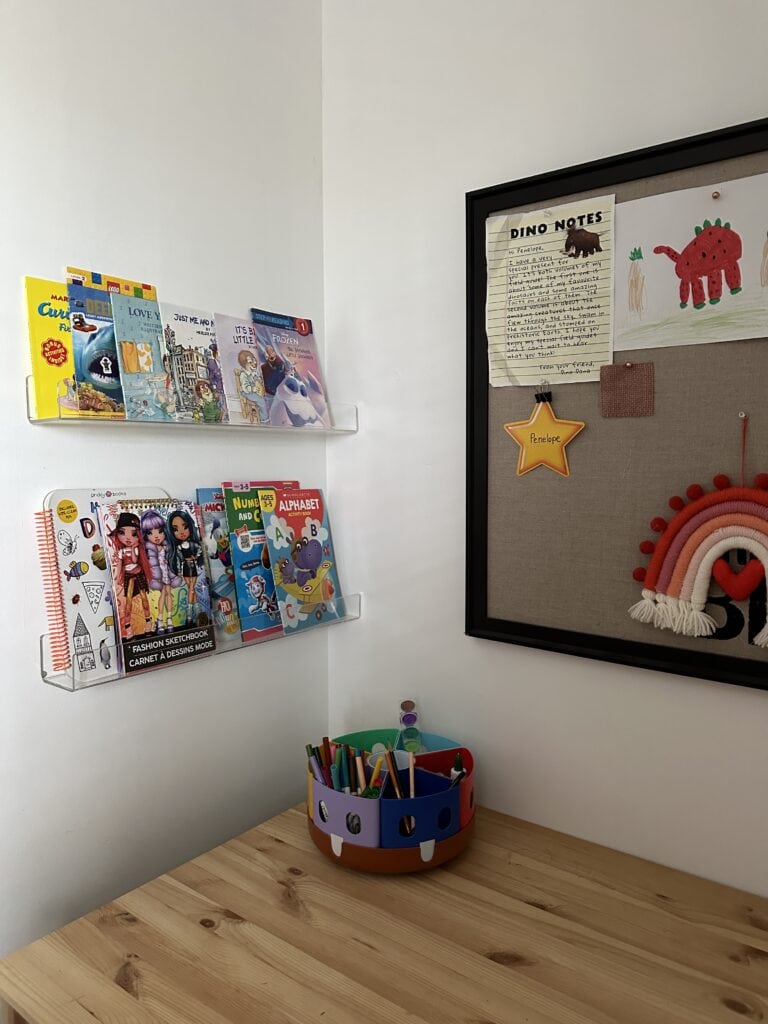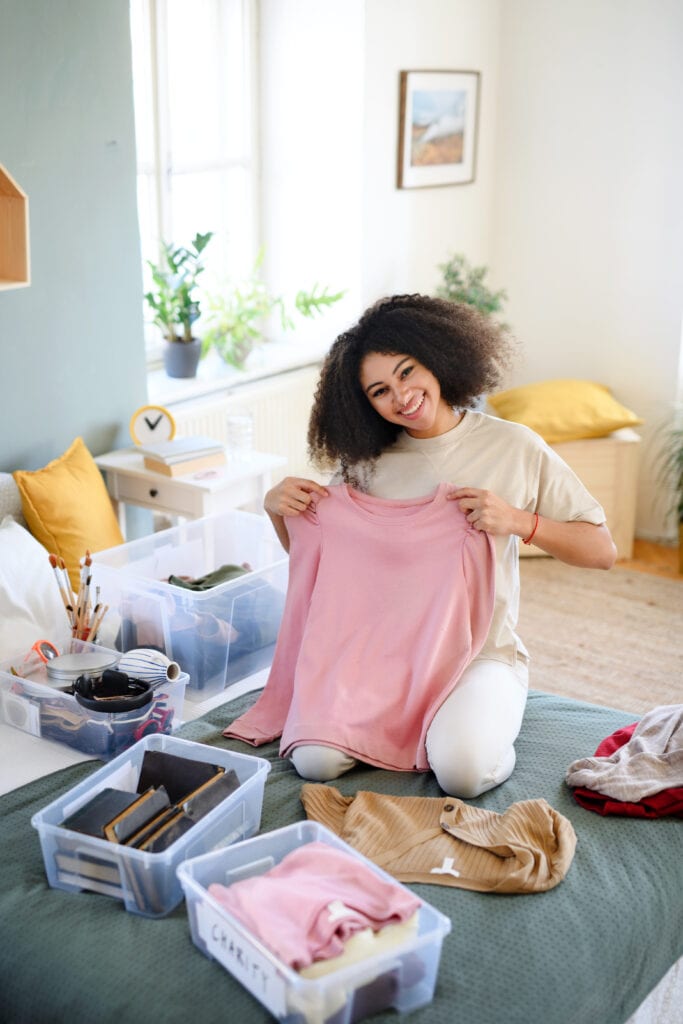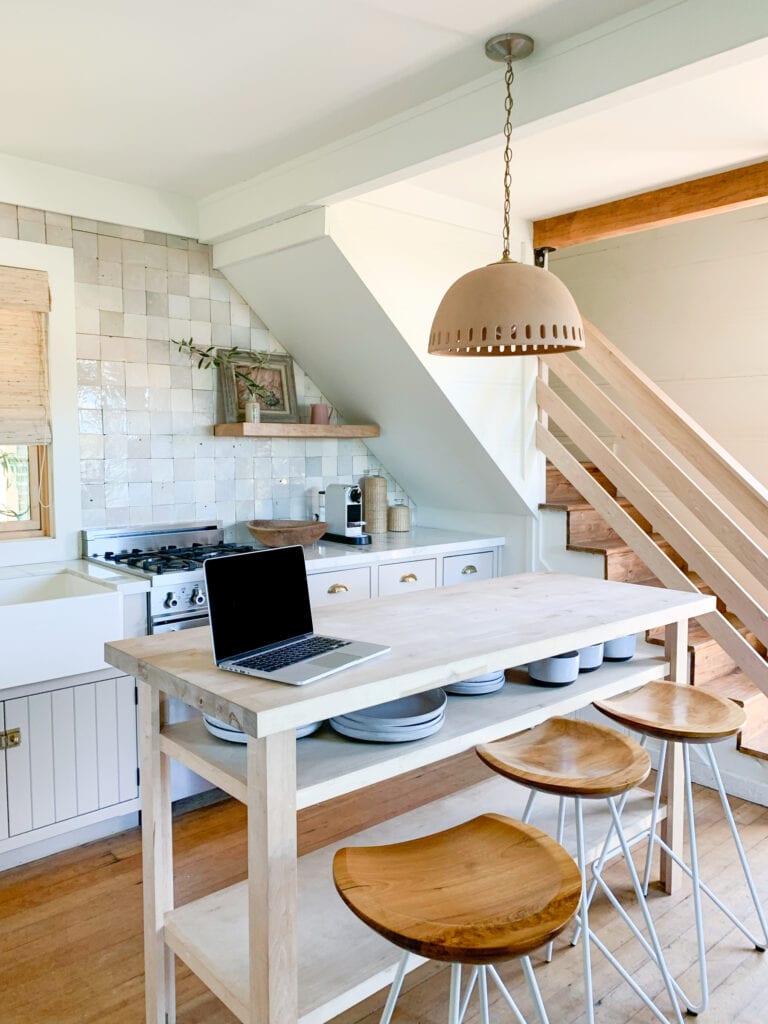How to Declutter Your Home When You’re Overwhelmed
Post Summary: If you’re wondering how to start decluttering when you’re overwhelmed? These tried and true tips will make the process of decluttering so much easier.

Decluttering can be an overwhelming task, especially when you’re faced with things that have been collected over the years.
The good news is, you’re in the right place. Im going to help simplify the decluttering process for you, breaking it down into manageable steps that make the journey feel less overwhelming. So whether you’re tackling an entire house or just a small space, we’re going to dive right into the best strategies to help you achieve a clutter-free home.
Sometimes the hardest part of decluttering is simply starting. Most people find themselves confronted with the choice of where to start. and then it’s a downhill spiral as you convince yourself that everything has a purpose and you talk yourself out of it altogether, which is why it’s so important to be armed with tools to help you manage those feelings.
Today on Instagram (if you’re reading this later you can check my highlights) we are starting a Holiday Declutter Challenge, where we spend 12 days decluttering our homes before the holidays.
We all know that the holidays bring an influx of “things” into our homes, stuff like toys, clothes, decor, and other gifts. Before we know it, January is here and we’ve amassed more clutter, which makes you feel overwhelmed, and stressed and derails any hope of you feeling like you’re best self as we enter the new year. But sometimes it can be hard to start. So let’s dive in and I’ll teach you some tips that have helped me go from a cluttered small home to a more organized, less stressful home.
Keep reading to find out how to start decluttering when you’re overwhelmed, where to start, and many more tools to help you ditch the clutter once and for all.
How to Start Decluttering When You’re Overwhelmed
Clutter is usually the main cause of a home that feels stressful, and sometimes all you need is to find the motivation to declutter and clean. But you might be asking yourself how do you clear the clutter when it feels impossible? If you’re feeling overwhelmed by too much stuff, you’re not alone.
This guide will even help teach you how to declutter 30 years of stuff or more! We know clearing clutter fast is the goal, and with this decluttering checklist, you can do just that. Im so excited to dive into it with you. If you’re reading this, then take a deep breath, because we’re going to help you feel less overwhelmed at home.
1. Take a Deep Breath and Set Goals
First and foremost, acknowledge the feeling of being overwhelmed. Take a deep breath.
The sheer volume of stuff in your entire home can be intimidating, but here’s the good news: decluttering doesn’t have to happen in one day. Set realistic goals. Whether it’s decluttering the kitchen counters over the weekend or the entire room over a month, know that even a small step counts.
Setting a goal for yourself will not only give you direction and focus, but it can also help you break the decluttering process into smaller, more manageable tasks. Which can help when you start to feel overwhelmed. Instead of seeing it as one big job that can’t be done, you can focus on a series of achievable tasks.
Some goals to help you get started are:
– Choose to work through one room at a time, like the nursery on Monday, and the kitchen on Friday.
– Set a timer, and work through however much you can within that period. I like to do 20, 40 or 60 minutes. I find any longer you get tired and then you are left with even more of a mess.
– You can choose to declutter specific areas like closets, digital files, or your vehicle. I recently decluttered my kid’s toys, and it took me about 40 minutes because I was focused on one goal.
Note: The key to effective goal-setting is making sure your goals are specific, measurable, achievable, relevant, and time-bound (SMART goals).


2. Start Small
A great first step is to pick a small area like the junk drawer or a coffee table. By choosing smaller sections or projects, you’ll achieve a quick win, giving you a sense of accomplishment and motivating you to take on larger tasks.
We find confidence when we achieve success, and sometimes completing a small task can give us the immediate sense of accomplishment we were looking for, boosting our motivation.
3. Enlist the Help of Family Members or Friends
Involving family members can make the process more efficient and fun. It’s often easier to make quick decisions about which items to keep or discard when you have a little help. Plus, children can learn the importance of letting go of items they no longer need.
Not to mention, the most obvious benefit is having a shared effort. The more hands the faster you will complete the task.
Another reason you may want to reach out for help from friends and family is the accountability aspect. If you struggle with the commitment you need to declutter your space, then they can act as an external form of accountability, helping you stay on track.
4. Deal with Sentimental Items Later
Sentimental items are often the hardest to declutter because of your emotional attachment to those items. Set them aside for now and focus on areas of your home where decisions might be simpler. Tackling the easiest room first or the easiest thing like unwanted papers or junk mail can build momentum.
Like we said before, it’s important to get those easy wins early on.
5. Use Tools to Aid in the Process
One of the best tools are Laundry basket. They can help you transport items and sort items. Another option is empty boxes, which are great for items you wish to donate, as well as trash bags which are a must for unwanted items. Don’t forget that storage bins can be a huge benefit for items you decide to keep. I’ll share my favorites below.
6. Avoid Distractions
While it might be tempting to have social media or TV running in the background, sometimes it can lead to distractions. If you find yourself easily distracted, play your favorite music to keep you motivated throughout the decluttering session.
However, some people like myself, prefer to have a YouTube video playing or watching stories on Instagram. The only times I stop watching and focus are on those tough decisions, like sentimental options.

7. Declutter Regularly
Contrary to popular belief, decluttering isn’t a one-time task. It’s an ongoing journey. Setting aside a small amount of time regularly, like 15 minutes a month, can help in maintaining a clutter-free space.
I also like to declutter seasonally, every season I like to go through my kid’s things, decide what clothes they wear, what they can’t fit, and what toys they don’t play with anymore and we donate as much as possible.
8. Celebrate Your Progress
Every time you clear a flat surface, like the dining room table, or completely declutter an area of your home, take a moment to celebrate. Enjoy the peace that fewer things bring to your daily life.
Here are a few reasons why you should always celebrate your progress, according to a former teacher.
Celebrating your decluttering progress is important for several reasons:
Why You Should Celebrate Your Progress
- Boost your motivation
- Acknowledge the effort it took
- Celebrating reinforces the positive behavior and decisions you made
- Breaks down any feeling of being overwhelmed
- Boost self-esteem!
9. Consider Professional Help
If you’re having a hard time or feel you lack the necessary skills, hiring a professional organizer can be a boon. They bring expertise, offer a fresh perspective, and can guide you in the right direction.
Send us an email if you’re local, we’d love to chat!
10. Stay Motivated
Bookmark this blog post or pin it to your social media to revisit these simple decluttering tips.
Remember, every tiny step you take in the decluttering journey brings you closer to a peaceful, decluttered space.
Lastly, as you declutter, remember it’s not about having less but about making room for what truly matters. A decluttered space brings clarity, reduces stress, and enhances productivity. So, whether you’re decluttering a small space or your whole house, embrace the process and enjoy the journey.
Let’s answer some reader questions
How do you declutter when you want to keep everything?
Decluttering when you want to keep everything requires a strategic and emotionally sensitive approach. Start by clearly defining your goals for the space or items, ensuring these goals align with your broader life aspirations. Next, categorize items based on frequency of use, sentimental value, and practicality. For items that hold sentimental value but aren’t frequently used, consider creative solutions like digital archiving, repurposing, or creating a dedicated memory box.
Engage in self-reflection and ask yourself why certain items feel indispensable, and if they truly contribute positively to your life. Seek external perspectives, either from friends or professional organizers, to provide objective opinions. Lastly, remember that decluttering is a continuous journey. It’s okay to take it slow, allowing yourself time to adjust and ensuring that every decision aligns with your desired end goal.
What if it isn’t my clutter?
Addressing clutter that isn’t yours can be delicate, as it involves navigating personal boundaries and respecting ownership. If you share a space with someone whose clutter affects you, communication is key. Approach the individual with empathy, understanding, and without judgment. Express your feelings and concerns about the clutter, emphasizing how it impacts your shared living situation or your well-being.

Rather than demanding change, collaborate to find a solution that respects both parties’ needs. It may be helpful to propose organized storage solutions, set shared space guidelines, or even schedule regular tidying sessions together. If the clutter belongs to someone you don’t live with, such as a friend or family member, tread lightly, and offer assistance only if they express a desire for help. Remember, everyone has different thresholds and perspectives on clutter, and it’s essential to prioritize relationships over possessions.
How to declutter sentimental items?
Decluttering sentimental items can be challenging due to the emotional attachments and memories associated with them. Here’s a step-by-step approach to help you navigate this sensitive task:
1. Prepare Emotionally
Understand that decluttering sentimental items can be emotional. Allow yourself to feel and process these emotions as they arise.
2. Set Clear Goals
Determine why you want to declutter these items. Whether it’s to free up space, reduce stress, or create a more organized environment, having clear goals will guide your decisions.
3. Gather All Sentimental Items
Before sorting, gather all your sentimental items in one place. This will give you an overview of what you have.
4. Categorize
Group items by type or event, such as childhood memories, gifts, or items from a specific person or period in your life.
5. Ask the Right Questions
– Does this item still hold significant sentimental value to me?
– Would I want to pass this item on to future generations?
– Does keeping this item align with my current lifestyle and values?
– Could this item bring more joy to someone else if I let it go?
6. Limit Quantity
Instead of keeping every item from an event or period, select a few that best represent the memory or sentiment. For instance, keep a couple of your child’s drawings rather than the entire collection.
7. Repurpose or Upcycle
Transform items into something you’ll use or display. Turn old shirts into a quilt, or old letters and cards into a scrapbook.
8. Digitize
Scan or photograph items like letters, photos, or artwork. This way, you preserve the memory without the physical clutter.
9. Create a Memory Box
Allocate a specific container or box for sentimental items. Once the box is full, reassess and prioritize what you want to keep.
10. Share Stories
Before parting with an item, share its story with someone. This can be a way of honoring the memory.
11. Consider Gifting
Some items may hold value for other family members or friends. Ask if they would like to have them.
12. Seek Support
Invite a trusted friend or family member to help you sort through items. Their perspective can be invaluable in the decision-making process.
13. Reflect and Revisit
If you’re unsure about parting with an item, set it aside and revisit it later. Sometimes, distance provides clarity.
14. Honour and say Goodbye
When you decide to let go of an item, do so with gratitude and respect. Recognize the role it played in your life and then release it.
Remember that the memories and emotions associated with sentimental items aren’t solely contained within the objects themselves. By thoughtfully decluttering, you’re not discarding memories but making space for new experiences and cherishing the most significant tokens of your past.
How to Declutter Each Space?
Decluttering can vary based on the space you’re addressing, as each area in a home or office often serves a unique purpose. Here’s a room-by-room guide to help you declutter:
- Bedroom:
- Clothes: Empty your wardrobe and sort clothes by category. Keep only those you wear regularly, fit well, and make you feel good. Consider donating, selling, or recycling the rest.
- Accessories: Sort jewelry, belts, scarves, and hats. Keep only what you use and love.
- Books & Magazines: Donate or recycle items you’ve finished reading or don’t plan to revisit.
- Bedside Tables: Remove unnecessary items. Keep only essentials like an alarm clock, lamp, and a book.
- Under the Bed: Clear out any hidden clutter, using storage bins if necessary for items you must keep.
- Living Room:
- Furniture: Evaluate the necessity and functionality of each piece. Consider the room’s flow and remove excess furniture.
- Entertainment: Organize DVDs, Blu-rays, games, and CDs. Digitize collections if possible and donate physical copies you no longer need.
- Shelves & Displays: Curate items on display, keeping only meaningful or aesthetically pleasing pieces.
- Electronics: Untangle and label cords, discard broken electronics and consider wireless solutions or cable management systems.
- Kitchen:
- Utensils & Cookware: Sort and keep only items you regularly use. Donate duplicates or items in disrepair.
- Pantry: Check expiry dates and discard outdated items. Organize by category.
- Refrigerator & Freezer: Regularly clean out and organize. Remove expired or unappetizing items.
- Cabinets: Sort items by type. Use organizers or dividers for better visibility and access.
- Bathroom:
- Medicine Cabinet: Dispose of expired medications safely. Organize remaining items by category.
- Makeup & Toiletries: Discard expired products and items you don’t use.
- Towels & Linens: Keep only what you need, ensuring they’re in good condition.
- Cleaning Supplies: Store them together, discarding any empty or unnecessary products.
- Home Office:
- Paperwork: Sort and file important documents. Shred sensitive material you don’t need. Consider digital storage solutions.
- Supplies: Organize pens, paper, and other office supplies, discarding broken or excess items.
- Electronics: Organize cords, label them, and dispose of non-functional electronics.
- Books: Keep relevant and necessary books; consider donating or selling the rest.
- Garage/Storage:
- Tools: Keep tools in good condition and organize them for easy access.
- Sports Equipment: Store together and discard or donate items no longer in use.
- Holiday Decorations: Keep only what you consistently use, ensuring they’re in good condition.
- Miscellaneous Items: Sort and categorize. Use clear storage bins to easily identify contents.
For each space:
- Set Clear Goals: Understand what you want to achieve with the decluttering.
- Take Before Photos: This provides motivation and a sense of accomplishment.
- Use the Four-Box Method: As you sort items, designate them to one of four categories: Trash, Give Away/Sell, Store, or Put Back.
- Regular Maintenance: Periodically revisit each space to maintain a clutter-free environment.
My Amazon Shop
Looking for everything you need to start decluttering?
Remember, decluttering is a process. It may not be accomplished in one day, but consistent effort will yield a more organized, harmonious living space. Let us know if there’s something you are still struggling with when it comes to decluttering. We’d love to help!
I hope this helped you learn how to start decluttering when overwhelmed or stressed with your home.









